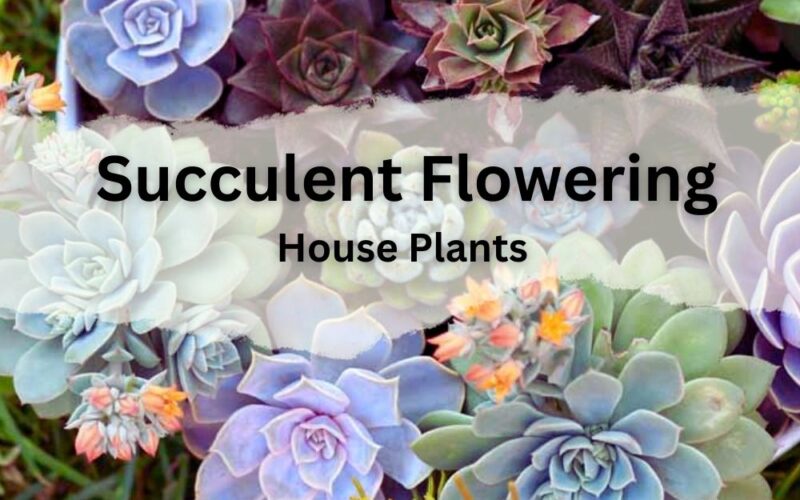In this article, I will tell you about succulent flowering house plants and you learn how to grow them healthy in your house to add more colours to your greenery house.
Succulents are plants with thick fleshy tissue that can store water in their leaves or stems. People live them due to:
- They are hardy and low-maintenance indoor or outdoor plants that can easily grow in your living space.
- You can find them in various sizes, shapes, and colours which can match easily with your indoor décor
- Succulents can grow in pots without drainage holes which makes them the perfect idea for those who want to take advantage of planting in cachepots.

Flowering succulent houseplants stand out from other succulents due to their additional beauty. However blooming succulents in house environments may seem hard, but the fan of gardening can add these gorgeous flowers to the indoor gardens.
So, let to find some of the most common flowering succulent house plants.
| For those who are busy:
➡ Here, you can hear the audio version of this article
|
Succulent flowering house plants list
In the following, you can see a list of Succulent flowering house plants names and pictures with tips for flowering succulent care. In addition, I will provide you with important characteristics of every plant that will help you to plant identification of flowering succulents.
Aloe Vera (Aloe barbadensis miller): Medical succulent flowering house plants
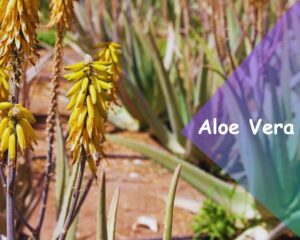
Aloe Vera looks like this:
- Its green leaves are thick, fleshy, lance-shaped leaves. The leaves often have serrated edges and can grow up to 12-18 inches in length. Although aloe vera is one of the Succulent flowering house plants, in most countries, Aloe Vera is grown for its medicinal gel.
- This plant produces tubular, yellow-orange flowers on tall stalks, although blooming is relatively rare indoors. However, to encourage blooming in Aloe Vera, ensure it receives adequate sunlight and proper care.
How to Care for Aloe Vera:
Light requirements: Aloe Vera is a hardy succulent that thrives in bright, indirect sunlight.
Watering requirements: Avoid overwatering. It will be good if you water it every 2-3 weeks. You must allow the soil to dry out completely between waterings.
Best soil: Use a well-draining cactus mix or succulent soil.
Fertilization: Aloe Vera is relatively low-maintenance.
Temperature: It can withstand temperatures between 59-77°F (15-25°C).
Propagation: Its propagation is easy through offsets or “pups” that form at the base of the plant.
Echeveria (Echeveria spp.): Colorful flowering houseplants

Echeverias looks like this:
- Echeverias is famous due to its rosette-shaped clusters of fleshy, pointed leaves. It is one of the colourful indoor plants that range from various shades of green to blue, purple, pink, and even silver.
- Echeverias is one of the succulent flowering indoor plants that can produce delicate, bell-shaped flowers. Its blooms are in colours pink, red, orange, or yellow. Echeverias typically bloom in the spring and summer
How to care for Echeverias:
Light requirements: Echeverias thrive in bright, indirect sunlight.
Watering requirements: Water sparingly, allowing the soil to dry out between watering sessions. It’s essential to avoid overwatering, as this can lead to root rot in pots without holes. Hence, this plant needs a well-draining soil.
Propagation: You can propagate it through leaf cuttings or offsets that form at the base of mature plants.
Haworthia (Haworthia spp.): Indoor succulents with tubular white flowers
Haworthias look like this:
- Haworthias are small succulents flowering indoor plants with rosette-like clusters of leaves. Their leaves are typically green, thick, and fleshy but some varieties have stripes or spots on the leaves. The shape and size of the leaves can vary among species. They are also known as Zebra plants.
- They can also produce slender, tubular white flowers on tall stalks in spring.
How to care for Haworthias:
Haworthias thrive in bright, indirect light places. They love well-draining soil. Avoid over-watering and try watering with a little water and slowly, allowing the soil to dry between waterings.
The best temperature for healthy growth is between 70-80°F (21-27°C). Propagation can be done through offsets or leaf cuttings.
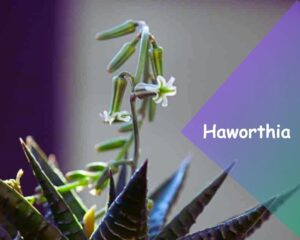
Jade Plant (Crassula ovata): Indoor succulents with small, star-shaped blooms.
Jade plants look like this:
- Jade plants are succulent flowering indoor plants that are characterized by their glossy, oval-shaped leaves. As mentioned in their name, the colour of their foliage ranges from deep green to jade-like hues.
- The leaves can be slightly fleshy and may develop a reddish tinge when exposed to bright light. Their blooms are small, star-shaped white, or pink.
How to care for Jade plants:
Jade plants need a bright, indirect light place. The best watering method is to water moderately. Allow the top inch of soil to dry out before watering.
The ideal soil for this plant is a well-draining cactus mix or succulent soil.
Jade plants prefer temperatures between 65-75°F (18-24°C) so they are ideal for your indoor environment. Propagation is very easy by straightforward through stem or leaf cuttings.
Christmas Cactus (Schlumbergera spp.): Winter succulent flowering house plants
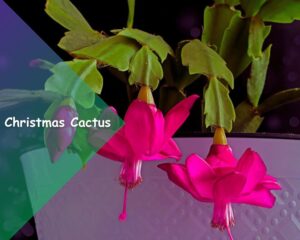
Christmas Cacti look like this:
Christmas Cacti have segmented flattened stems that are typically green and can have a slightly flattened appearance. It is one of the popular hanging succulent flowering house plants that produce colourful, pendulous flowers. The flowers are tubular in shades of pink, red, or white. As mentioned in its name, you see it bloom often during the holiday season.
How to care for Christmas Cacti :
Christmas Cacti thrive in bright, indirect light and require consistently moist soil. Use a standard potting mix with added organic matter to retain moisture.
To prevent root rot, you must water when the top inch of soil feels dry. Maintain a temperature between 60-70°F (15-24°C). Propagation can be done through stem cuttings.
How to make Christmas Cacti bloom:
To encourage blooming, you must provide a period of cooler temperatures (around 50-55°F or 10-13°C) for several weeks before the blooming period.
Crown of Thorns (Euphorbia milii): Flowering succulent with small colourful blooms

Crown of Thorns looks like this:
Crown of Thorns is an intriguing succulent flowering houseplant. Its thick stems are often grey or brownish and thorny.
This plant has oval-shaped, glossy leaves. The plant produces long-lasting blooms that are small. The colourful flowers can be red, pink, yellow, or white. I love its varieties with small white flowers.
How to care for Crown of Thorns:
Crown of Thorns grows healthy in bright, direct sunlight and well-draining soil. Water moderately and allow the soil to dry partially between waterings.
It prefers temperatures between 65-75°F (18-24°C). Propagation is possible through stem cuttings.
African Violet (Saintpaulia spp.): Flowering succulents with charming blooms.

African Violets look like this:
African Violets are compact succulents flowering indoor plants with fuzzy, dark green leaves. They can produce charming, velvety flowers that come in various colours, including shades of purple, pink, blue, and white.
How to care for African Violets:
African Violets prefer bright, indirect light and well-draining soil. Water the plant’s soil, not the leaves, to prevent leaf spotting. Keep the soil consistently moist but not soggy. Maintain a temperature between 70-75°F (21-24°C). Propagation is typically done through leaf cuttings.
Flaming Katy (Kalanchoe blossfeldiana): Flowering succulents clusters of small flowers

Flaming Katy looks like this:
Flaming Katy like other succulents has fleshy leaves that range from green to grey-green. The leaves may be red-edged, depending on the variety.
It is one of the popular succulent flowering indoor plants that produce clusters of small colourful flowers in shades of white, red, orange, yellow, and pink. The flowers are abundant and long-lasting.
How to care for Flaming Katy:
Put your Flaming Katy in a bright, indirect sunlight place and well-draining soil. Water sparingly, allowing the soil to dry between watering sessions. Maintain a temperature between 60-85°F (15-30°C). Propagation is possible through leaf cuttings.
String of Pearls (Senecio rowleyanus): Hanging succulent house plants

The string of Pearls looks like this:
String of Pearls is a hanging succulent. This plant is named due to its trailing stems that bear small, bead-like leaves resembling pearls. The leaves are usually green but may appear bluish-green in certain conditions.
It rarely produces noticeable flowers that are daisy-like. The flowers are white with long red stamens and bright yellow anthers. The small flowers are fragrant with a sweet and spicy, cinnamon-like scent.
How to care for String of Pearls:
String of Pearls prefers bright, indirect light and well-draining soil. Water sparingly, allowing the soil to dry thoroughly between waterings. Maintain a temperature between 70-80°F (21-27°C). Propagation is achievable through stem cuttings.
Water sparingly, allowing the soil to dry between waterings. They thrive well in temperatures between 70-80°F (21-27°C). you can propagate it through offsets or leaf cuttings.
Panda Plant (Kalanchoe tomentosa): Flowering succulents with silver leaves
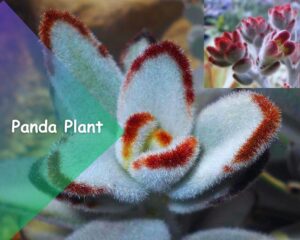
Panda Plant looks like this:
Panda Plant is one of the famous small indoor succulents that is known for its fuzzy, silvery-green leaves. Its leaves are covered with brownish spots on their edges. The leaves are oval-shaped and have a velvety texture.
Panda Plants can also produce small, tubular, and yellow flowers.
How to care for Panda Plants:
Panda Plants love the bright, indirect sunlight rooms of your house. They must grow in well-draining soil. Water sparingly, allowing the soil to dry out between watering sessions.
The best temperature for their healthy growing is between 60-75°F (15-24°C). The best way to propagate them is through stem or leaf cuttings.
Lithops (Lithops spp.): Daisy-like flowers between Living Stones
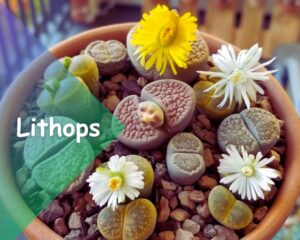
Lithops looks like this:
Lithops (also known as Living stones) are wonderful succulents that are renowned for their mimicry of stones or pebbles. Their strange appearance is due to two fused leaves with a cleft in the middle that resembles small stones.
You may spot intricate patterns or colours on the leaves of some varieties. They are also succulent flowering indoor plants that produce daisy-like flowers in shades of white or yellow.
How to care for Lithops:
Like other succulents, Lithops love to grow in bright, direct sunlight. You must plant them in well-draining soil tailored for succulents.
To prevent root rot you must water sparingly and allow the soil to dry out completely between waterings. They prefer temperatures between 70-80°F (21-27°C). Propagation is possible through offsets.
Gasteria (Gasteria spp.): Succulent flowering house plants with colourful blooms
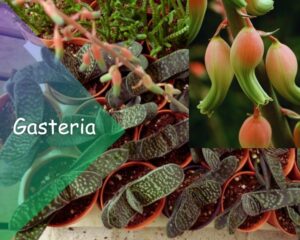
Gasterias looks like this:
Gasteria gets its name from its stomach-shaped flowers (tubular flowers on tall stalks). The flowers are a mix of orange, green, red, pink, or cream colours on a tall stalk.
Gasterias have showy thick, tongue-shaped leaves. There are intricate patterns and textures on their leaves. The leaves can be green, spotted, or variegated, adding to their visual appeal.
How to care for Gasterias:
You should provide bright, indirect light conditions for the healthy growth of Gasterias. They must plant in well-draining succulent soil.
Water moderately, allowing the soil to dry between waterings. The best temperature for their growth is between 65-80°F (18-27°C). you can propagate your Gasterias through offsets or leaf cuttings.
Conclusion
Here you found a comprehensive collection of names and images of succulent flowering house plants. I also told you about how to care for a succulent.
Have you ever had a flowering succulent with charming blooms? What was its name? Can you raise the above list with new plants?
Please tell us about your experience and idea below this page.

Elahe Rabiei
Hi, I’m Elaheh. My Academic major is plant protection, and houseplants are my expertise. As a houseplant lover, my house is full of indoor plants and it is my passion to take care of them. Hence, I’m here to share my knowledge and experience about growing healthy houseplants. I am also a plant protection advisor, so feel free to ask me any questions you may have.

